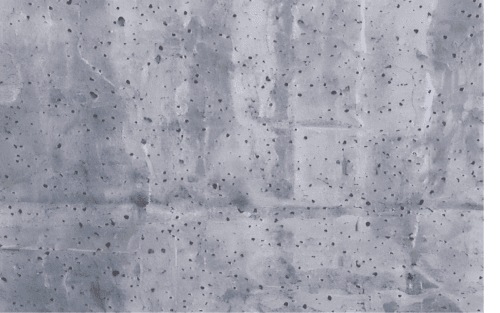
Thermal barrier coatings represent a significant advancement in building envelope technology, offering protection and energy efficiency benefits for structures of all sizes. While these coatings are commonly associated with exterior applications, many property owners wonder if they can effectively use them on interior walls as well. The answer is yes – thermal barrier coatings like ThermaCote® can be applied to interior walls with excellent results for energy savings and building comfort.
How Interior Thermal Barrier Coatings Work
When applied to interior walls, thermal barrier coatings create an additional protective layer that helps maintain consistent indoor temperatures. Unlike conventional paints, thermal barrier coatings contain specialized ceramic compounds that reflect radiant heat energy rather than absorbing it.
ThermaCote®’s weather barrier coating creates a seamless membrane on interior walls that helps prevent conditioned air from escaping through tiny cracks and pores in the wall materials. This process contributes to a more stable indoor climate and reduces the workload on HVAC systems.
Think of the coating as creating countless tiny insulation pockets across your wall surface. These microscopic air cells act as barriers that slow down heat as it tries to move through your walls – similar to how a coffee thermos keeps your drink hot by trapping air between two layers.
Benefits of Applying Thermal Barrier Coatings to Interior Walls
Improved Energy Efficiency
Interior thermal barrier coatings help maintain conditioned air inside your building by creating a more effective thermal boundary. This improved insulation performance reduces energy transfer through walls, which can lead to lower utility bills year-round. By keeping heated or cooled air where it belongs, your HVAC system won’t need to work as hard to maintain desired temperatures.
Independent testing has shown that properly applied thermal barrier coatings can contribute to energy savings of 15-30% in some buildings, with results varying based on existing insulation, climate zone and building usage patterns.
Mold and Moisture Prevention
A quality thermal coating like ThermaCote® helps manage moisture problems that can develop within wall assemblies. By limiting condensation on interior wall surfaces, these coatings reduce the risk of mold and mildew growth – major concerns for building health and indoor air quality.
The ceramic particles in ThermaCote® help maintain surface temperatures above dew point, minimizing conditions where moisture can accumulate and support microbial growth. This benefit is particularly valuable in buildings located in humid climates or those with existing moisture management challenges.
Increased Comfort
Interior thermal coatings contribute to more consistent room temperatures by minimizing cold or hot spots near exterior-facing walls. This improved thermal stability creates more comfortable living and working environments without drafts or temperature fluctuations.
The reflective properties of ceramic-based coatings also help balance radiant temperature differences between walls and surrounding air, addressing a comfort factor that conventional insulation often misses. Occupants typically report greater satisfaction with spaces treated with thermal barrier coatings.
Extended HVAC Lifespan
With reduced demands on heating and cooling systems, your HVAC equipment won’t have to cycle on and off as frequently. This decreased operational demand can extend the useful life of expensive mechanical systems and lower your maintenance requirements.
For example, in a typical office building, reducing the cooling load by just 10-15% can significantly decrease the number of times air conditioning units cycle throughout a hot summer day, potentially adding years to the equipment’s functional lifespan.
Application Considerations for Interior Walls
Surface Preparation
For optimal adhesion and performance, interior walls should be clean, dry, and free of loose paint, dust, or other contaminants before applying thermal barrier coatings. Proper surface preparation ensures the coating bonds correctly with the substrate.
Professional applicators typically wash surfaces thoroughly and may use primer coats on certain substrates to maximize adhesion. Minor surface imperfections should be repaired before application to achieve the best barrier performance.
Coverage Area
ThermaCote® can be applied to virtually any interior wall surface, including drywall, plaster, concrete, and wood. The coating performs well in all indoor spaces but may provide the most noticeable benefits when used on exterior-facing walls where temperature differences are greatest.
Strategic application focusing on thermal bridges – areas where heat moves more readily through walls due to studs or framing – can maximize performance benefits while controlling project costs. In your home, these thermal bridges typically include the wall studs, areas around window frames, and transitions between different building materials – all places where heat escapes most easily.
Application Methods
Professional applicators typically use airless sprayers for large interior wall areas, though roller application works for smaller projects. The coating dries to form a thin, seamless barrier that doesn’t significantly alter room dimensions or aesthetics.
Application temperatures and ambient humidity levels affect drying time and final performance characteristics. ThermaCote® requires properly calibrated equipment and skilled technicians to achieve optimal coverage and thickness consistency across all treated surfaces.
Finish Options
ThermaCote® applies as a white coating that can be left as-is or painted over with standard interior paints to match any color scheme or design preference. This flexibility allows for both performance and visual customization.
When choosing topcoats, low-VOC water-based paints work best and won’t compromise the performance benefits of the thermal coating underneath. Some designers integrate the slightly textured finish into their aesthetic vision rather than covering it with additional paint layers.
Cost-Benefit Analysis

While thermal barrier coatings represent an additional investment compared to standard interior paint, the long-term financial benefits often justify the expense. You’ll typically see returns through:
- Reduced monthly energy bills
- Decreased HVAC maintenance costs
- Extended equipment lifespans
- Potential tax incentives for energy efficiency improvements
The payback period for interior thermal coatings varies by climate, building type and energy costs, but many commercial applications achieve complete return on investment within 3-5 years through operational savings. If you’re a homeowner, your application may take longer to realize full financial benefits but will provide immediate comfort improvements.
The environmental benefits of reduced energy consumption also add value if you’re concerned with sustainability and reducing your ecological footprint.
Integration with Building Envelope Systems
Your building’s envelope consists of all the elements that separate the indoor environment from the outdoors – walls, roof, windows, doors, foundation, and the materials that connect them. Interior thermal coatings work best as part of a comprehensive approach to managing this entire system.
When used alongside proper insulation, air sealing, and exterior weather barriers, these coatings help create a complete thermal boundary that maximizes energy performance throughout your structure.
For properties with challenging insulation situations or historic buildings where traditional insulation methods might be difficult to implement, interior thermal coatings offer a minimally invasive option for improving thermal performance.
Building engineers increasingly specify thermal coatings for interior applications when traditional cavity insulation is insufficient or impractical. The coatings complement other energy-efficiency measures without requiring significant structural modifications.
Experience the ThermaCote® Difference
For over 30 years, ThermaCote® has led the industry in developing advanced weather barrier and protective coatings that increase energy efficiency while protecting structures. Our water-based, environmentally friendly products meet rigorous standards for sustainability and performance, earning MAS Certified Green™ status.
Want to learn how ThermaCote® can improve your building’s interior comfort and efficiency? Contact our team today to discuss your project needs and discover the right thermal barrier solution for your interior walls.
Frequently Asked Questions
How thick is ThermaCote® when applied to interior walls?
ThermaCote® applies in a thin layer approximately 8-10 mils (0.008-0.010 inches) thick when wet, drying to about 4-5 mils. This minimal thickness allows it to provide thermal benefits without changing room dimensions or interfering with trim work.
Can thermal barrier coatings be used in humid areas like bathrooms?
Yes, thermal barrier coatings work well in high-humidity environments. In fact, their moisture-resistant properties make them ideal for bathrooms, kitchens, and laundry rooms where they help prevent condensation and associated mold growth.
Will thermal coatings change the look of my interior walls?
ThermaCote® applies as a white coating with a slight texture. Many property owners choose to paint over it with standard interior paint in their preferred color and finish, allowing for both thermal benefits and design flexibility.
How long do interior thermal barrier coatings last?
When properly applied, ThermaCote® provides long-lasting performance on interior surfaces. The coating bonds permanently with the substrate and typically lasts the lifetime of the interior finishes, requiring no special maintenance beyond normal wall care.
Are thermal barrier coatings safe for indoor use?
ThermaCote® is formulated with ultra-low VOCs (volatile organic compounds) and has been specifically designed to be environmentally friendly. The water-based formula makes it safe for indoor application without harmful fumes or off-gassing concerns that might affect indoor air quality.

